 A UK tour company has launched a 111-day, $1 million "safari." Got cash and time? Here's where you could be headed, starting with an eight-day exploration in Kenya to see northern white rhino, one of the world's most endangered animals. They're extinct in the wild according to the World Wide Fund for Nature though a few individuals remain at Ol Pejeta Conservancy, watched over by armed guards.
A UK tour company has launched a 111-day, $1 million "safari." Got cash and time? Here's where you could be headed, starting with an eight-day exploration in Kenya to see northern white rhino, one of the world's most endangered animals. They're extinct in the wild according to the World Wide Fund for Nature though a few individuals remain at Ol Pejeta Conservancy, watched over by armed guards. 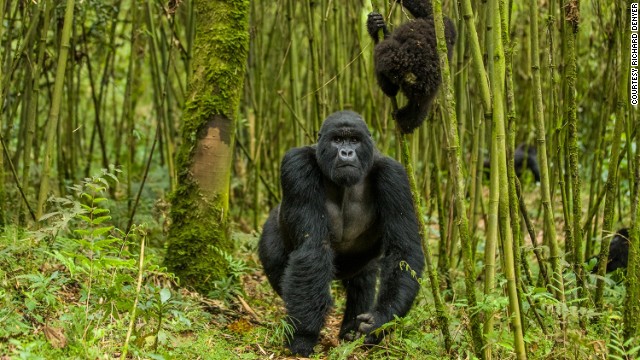 The safari is designed to combine luxury experiences with contributions to conservation efforts. A five-day trip to Rwanda will seek out the country's mountain gorillas. Just 880 individuals remain today, in the DRC, Rwanda and Uganda.
The safari is designed to combine luxury experiences with contributions to conservation efforts. A five-day trip to Rwanda will seek out the country's mountain gorillas. Just 880 individuals remain today, in the DRC, Rwanda and Uganda. 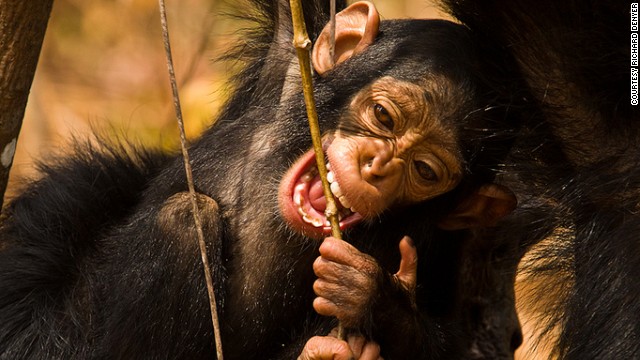 Around a thousand of Africa's remaining wild chimpanzees (WWF estimates 150,000-250,000 of our closest cousins remain in the wild) live in this remote wilderness. The trip covers four days at Mahale Mountains National Park tracking them.
Around a thousand of Africa's remaining wild chimpanzees (WWF estimates 150,000-250,000 of our closest cousins remain in the wild) live in this remote wilderness. The trip covers four days at Mahale Mountains National Park tracking them.  Twelve days in Madagascar takes guests close to the lemurs of the Palmarium private reserve. From 1981 to 2008, the black-and-white ruffed lemur (pictured) is believed to have decreased in number by 80%, with some estimates putting the population as low as 1,000 individuals.
Twelve days in Madagascar takes guests close to the lemurs of the Palmarium private reserve. From 1981 to 2008, the black-and-white ruffed lemur (pictured) is believed to have decreased in number by 80%, with some estimates putting the population as low as 1,000 individuals. 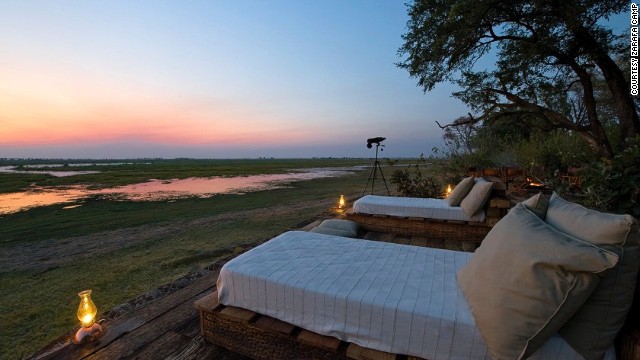 One week will be spent at the Selinda Concession seeking out resident wild dogs. Seeing these "painted dogs," which differ to wolves and domesticated dogs by having four toes rather than five, is an increasingly rare thing. Their population is estimated at 3,000-5,500.
One week will be spent at the Selinda Concession seeking out resident wild dogs. Seeing these "painted dogs," which differ to wolves and domesticated dogs by having four toes rather than five, is an increasingly rare thing. Their population is estimated at 3,000-5,500.  The black rhinos in the Palmwag Concession in Namibia are critically endangered, with fewer than 5,000 left in the wild. Their longer front horn makes them targets for poachers.
The black rhinos in the Palmwag Concession in Namibia are critically endangered, with fewer than 5,000 left in the wild. Their longer front horn makes them targets for poachers. 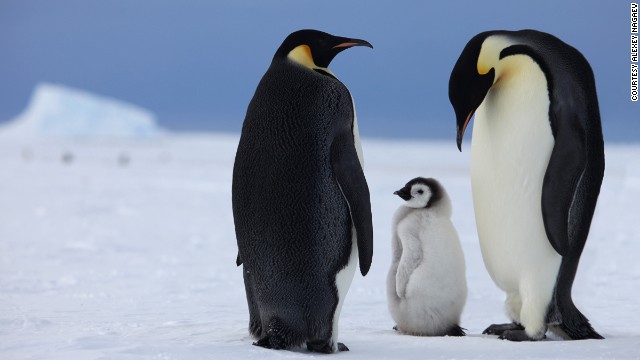 Eight days in Antarctica will be spent exploring ice caves, rock climbing and kite-skiing. The main draw is a colony of 6,000 emperor penguins, populations of which could decline by 50% according to the WWF if global average temperatures rise by just 2 degrees Celsius.
Eight days in Antarctica will be spent exploring ice caves, rock climbing and kite-skiing. The main draw is a colony of 6,000 emperor penguins, populations of which could decline by 50% according to the WWF if global average temperatures rise by just 2 degrees Celsius. Snow leopards and Bengal tigers will (hopefully) be part of the 10-12 day stint in Ladakh and the parks of Kanha and Bandhavgarh, northwestern India. There are fewer than 2,500 Bengal tigers in the wild, but they're still the most populous tiger subspecies.  This little guy, plus sun bears and pygmy elephants, can be seen in Borneo. There are approximately 41,000 Bornean orangutans in the wild. Deforestation and illegal wildlife trade are their biggest threats.
This little guy, plus sun bears and pygmy elephants, can be seen in Borneo. There are approximately 41,000 Bornean orangutans in the wild. Deforestation and illegal wildlife trade are their biggest threats. 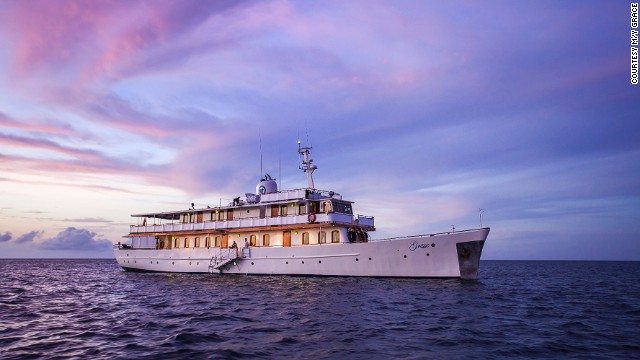 The M/Y Grace will explore the land and marine systems that inspired Darwin's Theory of Evolution. There are approximately 14,300 Galápagos giant tortoises on the islands. They're considered a vulnerable species, but not endangered, and often live longer than 100 years.
The M/Y Grace will explore the land and marine systems that inspired Darwin's Theory of Evolution. There are approximately 14,300 Galápagos giant tortoises on the islands. They're considered a vulnerable species, but not endangered, and often live longer than 100 years.  The Pantanal comprises seasonally flooded savannahs and tropical forests in central-western Brazil. Time here will be spent cruising the rivers in search of jaguars as they drink at the water's edge. With 15,000 jaguars left in the wild, they're classified "near threatened" and on the decline due to habitat loss and poaching.
The Pantanal comprises seasonally flooded savannahs and tropical forests in central-western Brazil. Time here will be spent cruising the rivers in search of jaguars as they drink at the water's edge. With 15,000 jaguars left in the wild, they're classified "near threatened" and on the decline due to habitat loss and poaching.  Finally, the frozen tundra of Canada. A few days here will be spent spotting polar bears as they gather along the shores of Hudson Bay, waiting for the water to freeze so they can set out to hunt. Polar bears are listed as vulnerable by the WWF, with a population of 20,000-25,000.
Finally, the frozen tundra of Canada. A few days here will be spent spotting polar bears as they gather along the shores of Hudson Bay, waiting for the water to freeze so they can set out to hunt. Polar bears are listed as vulnerable by the WWF, with a population of 20,000-25,000.
- The $1 million trip takes in 12 destinations over 111 days to see 18 endangered species
- Follows other million-dollar vacation ideas, including a stay in converted submarine love hotel
- Journey to Nature's Edge includes viewing gorillas in Rwanda and penguin-spotting in Antarctica
(CNN) -- How stressed out do you need to be to spend $1 million on a 111-day holiday?
Rhetorical questions come and go, but the latest super-luxe vacation is here to stay, as long as its "attractions" remain -- species close to extinction.
"That money serves to assist the endangered species that potential clients would see," says Will Bolsover, managing director at UK-based Natural World Safaris, which is offering what it's calling a "Journey to Nature's Edge."
Prospective safari-goers (so far no one has booked) will get to gawk at 18 endangered species in 12 countries over 111 days, all from the Hermès-catered splendor of luxury lodgings.
MORE: 11 wildlife experiences that could vanish in your lifetime
The Borneo leg of the trip offers the chance to see little guys like this.
Guests will fly to each destination in first class, meet local conservation experts and have fiddly things like park entrance fees, transport and excursions arranged and paid for.
The $1 million price tag covers two people and Bolsover himself, who'll accompany guests "to ensure everything runs smoothly."
He says his own costs are greatly reduced by partners in the locales.
Ten percent of the fee goes to the conservation projects involved and conservation administration CITES.
"We want to highlight the plight of endangered species on our planet and bring this to the attention of individuals at the same time as them truly experiencing the natural world and the conservation efforts that are ongoing to protect it," Bolsover says.
Super-luxe holiday trend
It's not the most expensive vacation to have been conceived recently.
A $1.5 million trip to all 962 UNESCO World Heritage Sites was created, and reportedly booked, last year.
Just a few weeks ago a company launched its "Lovers Deep" concept -- converting a submarine into a private love hotel.
A week on that, at nearly $290,000 per night, would cost more than $2 million.
But at an average of $83,333 per destination -- an example of which is a five-day stay to see mountain gorillas in Rwanda -- this Journey to Nature's Edge falls into the just-think-what-else-you-could-do-with-that-kind-of-money category.
"The $1 million price tag does grab people's attention, however this was the cost when we finalized pulling the trip details together," says Bolsover.
He adds that, despite the high-end price, guests may not be pampered every moment.
"People are prepared to pay a premium to get out and experience something entirely different and this may be staying at the most luxurious property in Botswana seeing some breathtaking game.
"Equally it could be staying at a very basic camp in Hemis National Park in India at minus 30 degrees Celsius with no shower facilities in the hope of catching a glimpse of the elusive snow leopard!"
Those interested in booking, or just window shopping, can do so at the Natural World Safaris website.
Would you pay $1 million for a chance to see these endangered species? Let us know below.
No comments:
Post a Comment